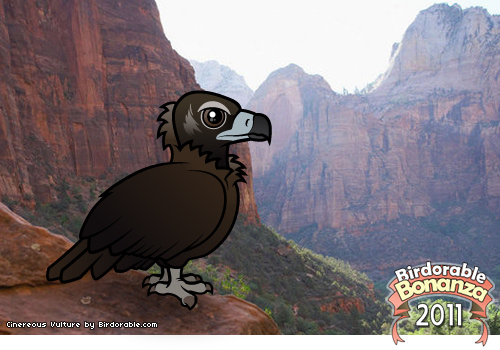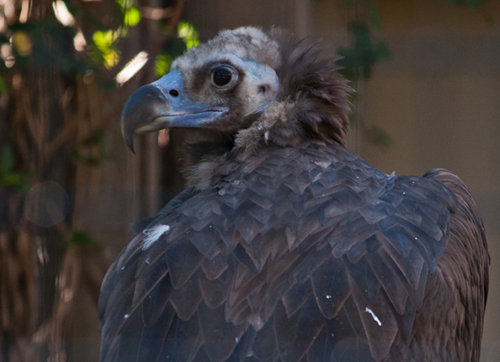Bonanza Bird #3: Cinereous Vulture

For 19 days we're adding a new Birdorable bird every day as part of our Birdorable Bonanza 2011. We're counting up to revealing our 350th species! Today's bird is the Cinereous Vulture.

Cinereous Vulture from tombothetominator
Cinereous Vultures are huge birds of prey that range through parts of Europe and Asia. They are also known as Black Vultures (no relation to the American Black Vulture) or Monk Vultures. In their south European range, they are in trouble. Poisoning is a major problem facing these and other vulture species, but habitat loss and food scarcity are also detrimental to the survival of the species. Researchers from the Denver Zoo conducted a study which revealed that Cinereous Vultures use a huge range of territory. Birds tagged with wing markers similar to those used on California Condors were found 1200 miles from their point of origin. While the birds were tagged by scientists, follow-up data provided by keen-eyed birdwatchers helped to complete the study, which is on-going.

Tomorrow's bird is an Australian parrot that is named after a number.






Comments
Leave a comment
Thank you!